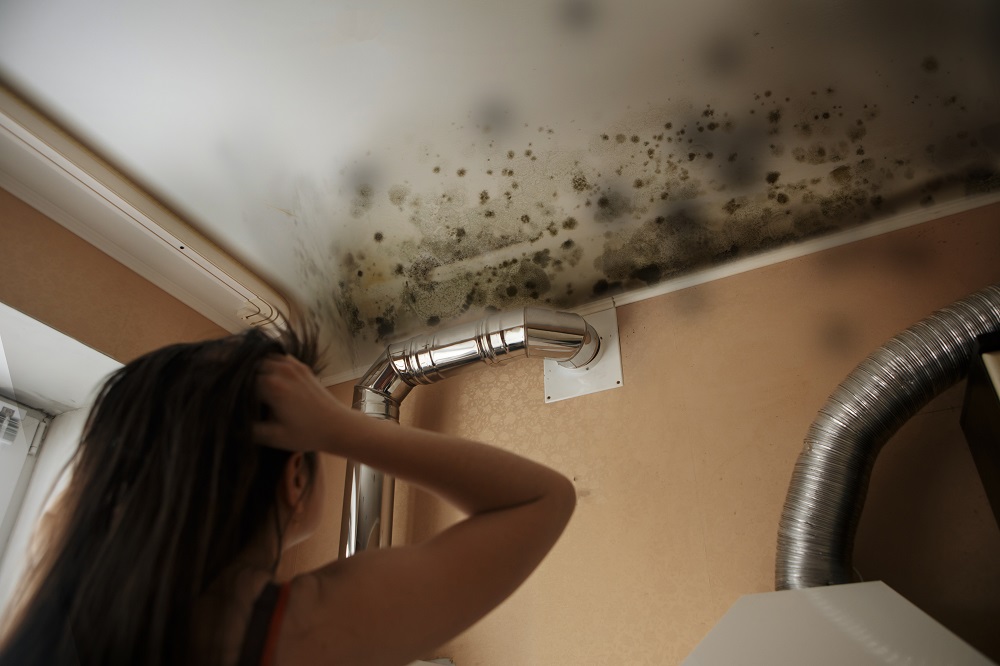If there is mold in your attic, you may be asking yourself if you need to hire a professional or if you can get rid of it yourself. The truth is that it is better to be safe than sorry. If you can’t find the source of the problem, if it’s penetrated the insulation, or if it has spread beyond 10 square feet, you should call a professional.
Attic mold removal is dangerous without the right equipment. Using the wrong cleaning products will prolong the issue and you risk spreading more spores into the air. Inhaling mold spores is very hazardous to your health and letting the mold spread could cost you thousands of dollars in repairs. Mold will spread into the walls and ruin the insulation of your home.
Call a professional to inspect the mold in your attic and provide you with a quote. The technician can find the source of the problem and guide you toward a permanent solution. They can then remove the mold safely so you can breathe easier.
When Can You Remove Mold Yourself?
It is safe to remove small quantities of mold when it is on a nonporous surface, such as tile. Put on a pair of gloves, wear a mask, and treat the area with some household products. Do not mix them. Spray the area, let it sit, then scrub the mold away. Here are three products you can use to clean mold yourself.
- Hydrogen peroxide. Spray the moldy area with hydrogen peroxide, then let it sit for 10 to 15 minutes. Then, scrub the mold off with a stiff brush. Rinse with water and repeat if needed.
- White vinegar. White vinegar has antibacterial and antifungal properties. Spray undiluted vinegar onto the surface, then let it sit for a few hours. Scrub the area, rinse, and repeat until the mold is gone.
- Baking soda. Dissolve a teaspoon of baking soda in a spray bottle of hot water. Spray the surface, then scrub the surface with a brush. Rinse and repeat. You can also rinse the surface with vinegar once you have scrubbed and rinse the baking soda away.

What Causes Mold in the Attic?
Mold is a natural fungus that helps things decompose, like fallen trees and animal matter. As it spreads, mold releases spores, which are tiny particles that float around in the air. Once a spore has touched a wet surface, it grows into a patch of mold. Mold spores are everywhere, but they are not dangerous in small quantities. Here’s how they become a problem in the attic:
- Roof Leaks. Attic mold is often caused by holes and leaks in the roof. Aging roofs, animal invasions, and ice dams are often the culprit. Check the wood in your attic for discolorations and signs of moisture. Inspect the rafters, joists, beams, skylights, and windows carefully. You should also that there are no leaks in your plumbing stacks or aid conditioner. If you have a vapor barrier, check the plastic for condensation. Outside, look for gaps along the roof’s edge and holes in the shingles.
- Poor Ventilation. Attics that are poorly ventilated suffer from swings in temperature, which result in condensation. As warm air from inside the home rises and collides with the cool air inside the attic, water droplets form, wetting the insulation and causing mold. Check that your soffits and roof vents aren’t obstructed. Air should flow through the soffits, into the attic, and out the vents at the top of the roof. Make sure that your bathroom fans and dryer vents blow air outside and check the building codes for your area. You may not have enough vents to prevent condensation.
- Poor Insulation. Dirtied, damaged, worn out, or insufficient insulation may cause mold in the attic because it is failing to manage the temperatures within the building. Proper insulation will ensure that the warm air inside the house does not collide with the cool air inside the attic, which will prevent the formation of water droplets and mold. Find out when your insulation was last replaced and consider having it inspected by a professional.
- Wildlife. Raccoons and squirrels that have broken into the attic will urinate in the insulation, which causes mold. If you’ve suffered an animal invasion, it’s important that you have the animals removed and have the attic cleaned up after them. This may require the removal and replacement of attic insulation.
How do Professionals Remove Mold?






